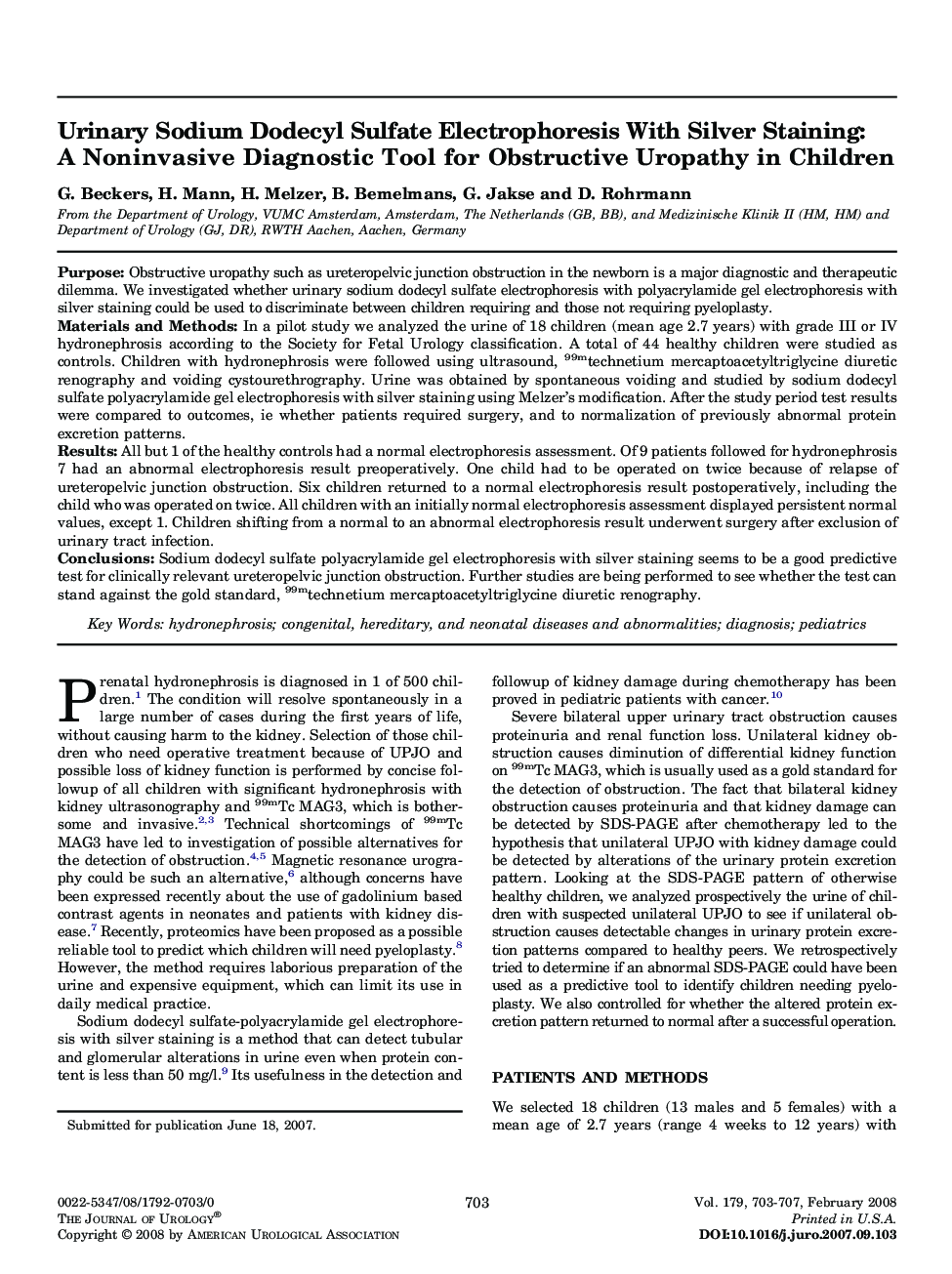| Article ID | Journal | Published Year | Pages | File Type |
|---|---|---|---|---|
| 3874421 | The Journal of Urology | 2008 | 5 Pages |
PurposeObstructive uropathy such as ureteropelvic junction obstruction in the newborn is a major diagnostic and therapeutic dilemma. We investigated whether urinary sodium dodecyl sulfate electrophoresis with polyacrylamide gel electrophoresis with silver staining could be used to discriminate between children requiring and those not requiring pyeloplasty.Materials and MethodsIn a pilot study we analyzed the urine of 18 children (mean age 2.7 years) with grade III or IV hydronephrosis according to the Society for Fetal Urology classification. A total of 44 healthy children were studied as controls. Children with hydronephrosis were followed using ultrasound, 99mtechnetium mercaptoacetyltriglycine diuretic renography and voiding cystourethrography. Urine was obtained by spontaneous voiding and studied by sodium dodecyl sulfate polyacrylamide gel electrophoresis with silver staining using Melzer’s modification. After the study period test results were compared to outcomes, ie whether patients required surgery, and to normalization of previously abnormal protein excretion patterns.ResultsAll but 1 of the healthy controls had a normal electrophoresis assessment. Of 9 patients followed for hydronephrosis 7 had an abnormal electrophoresis result preoperatively. One child had to be operated on twice because of relapse of ureteropelvic junction obstruction. Six children returned to a normal electrophoresis result postoperatively, including the child who was operated on twice. All children with an initially normal electrophoresis assessment displayed persistent normal values, except 1. Children shifting from a normal to an abnormal electrophoresis result underwent surgery after exclusion of urinary tract infection.ConclusionsSodium dodecyl sulfate polyacrylamide gel electrophoresis with silver staining seems to be a good predictive test for clinically relevant ureteropelvic junction obstruction. Further studies are being performed to see whether the test can stand against the gold standard, 99mtechnetium mercaptoacetyltriglycine diuretic renography.
